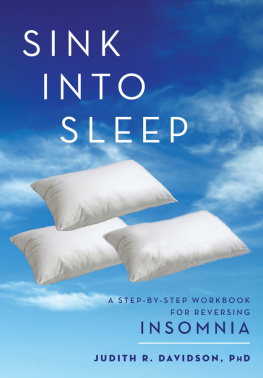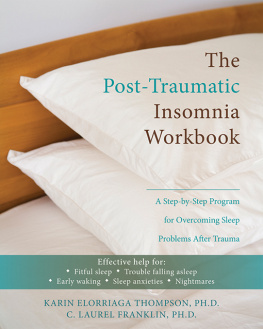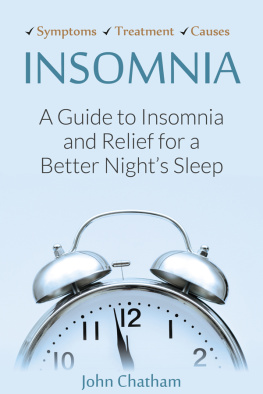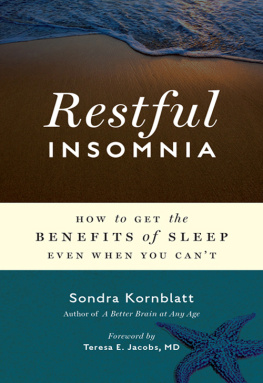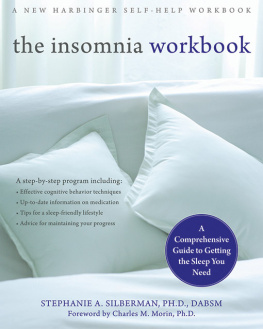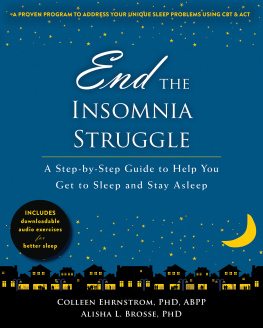As an undergraduate at Lawrence University in Appleton, Wisconsin, I was fortunate to have two professors, Dr. John Stanley and Dr. Bruce Hetzler, who through their courses introduced me to the emerging field of behavioral medicine. They encouraged my interest in the field, sponsored my tutorials, independent studies, and honors thesis, and worked closely and patiently with me during my years at Lawrence. Their influence on my thinking and my career was tremendous and I will always be grateful to them.
I am also grateful to Dr. Richard Warch, President of Lawrence University, who supported my research there. My years at Lawrence stimulated my thinking, provided me with the skills to become a clinician and scientist, and were nothing less than enchanting.
Dr. Allan Belden and John Kemp gave me my first opportunity to work with patients by hiring me as a stress management specialist at St. Elizabeths Hospital in Appleton. Their support, guidance, and confidence in me were greatly appreciated. I also thank Dr. Joel Lubar for the opportunity to work with him and complete my doctoral degree at the University of Tennessee. His instruction and wisdom prepared me for a career as a scientist and clinician.
I am indebted to the pioneering work of several individuals, including Dr. Herbert Benson, Dr. Kenneth Pelletier, Dr. Robert Ornstein, and Dr. David Sobel, who influenced my thinking early in my career and have contributed enormously to the field of behavioral and mind-body medicine. Herbert Benson also gave me the opportunity to work with him as a postdoctoral fellow at Harvard Medical School and to continue my work with him over the years. He provided me with the initial support needed to continue my research and has been a mentor, colleague, and friend. It has been an inspiration and privilege to work with him.
Dr. Dennis Russo and Dr. Bruce Masek provided me with the opportunity to receive clinical training at Harvard Medical Schools Childrens Hospital as a postdoctoral fellow. Their encouragement, guidance, and knowledge as clinicians helped shape my career and the careers of many others.
I am also grateful to my colleagues at the Division of Behavioral Medicine, the Mind/Body Medical Institute, and the Sleep Disorders Center at Beth Israel Deaconess Medical Centerparticularly Dr. Ann Webster, Dr. Margaret Caudill, Carol Wells-Federman, Eileen Stuart, and Dr. Jean Mathesonfor sharing their ideas and talents, for their friendship and encouragement, and for helping to shape my thinking. Margaret Caudill suggested that I write this book, Jean Matheson provided me with the opportunity to join the Sleep Disorders Center at Beth Israel Deaconess Medical Center, and Ann Webster has brightened my days with her wisdom, energy, spirit, and encouragement.
The late Richard Friedman was my research director, mentor, colleague, and friend for ten years. His influence on my training and development as a scientist was immeasurable, as were his contributions to the field of behavioral medicine. His brilliance, spirit, and memory will live forever in my work and those of my colleagues at the Mind/Body Medical Institute.
I am also indebted to the many patients with whom I have worked over the decades. By sharing their experiences and lives with me, these individuals have helped me to grow as a clinician, scientist, and person. I also thank the administrative staff of the Division of Behavioral Medicine and the Sleep Disorders Center at the Beth IsraelDeaconess Medical Center for their assistance with the Behavioral Medicine Insomnia Program; Joshua Sherman and George Warburg for their funding of my postdoctoral training; and the Paul P. Dosberg Foundation, Inc., and the National Institutes of Health for their research funding.
Thanks to Ned Leavitt and Connie Clausen for their suggestions in the preliminary phases of this project and to Deb Futter, Dr. Mitch Stein, Dr. Joan Borysenko, and Patti Breitman for their professional advice and assistance along the way.
Thanks also to my literary agent, Reid Boates. He believed in me and has made my first book an exciting, rewarding experience. His savvy advice, wisdom, and skill have been invaluable in every stage of this project. He is a delight to work with and the consummate professional.
A special thanks goes to my editor at Henry Holt, Tracy Brown, for his enthusiasm and confidence in me and for giving me the opportunity to write this book. Tracys support and guidance made the somewhat daunting experience of writing my first book surprisingly painless. He is a writers dream.
Finally, I am deeply grateful to my wife, Jody Skiest, and my father, Jim Jacobs, who encouraged me through every stage of this project, patiently reviewed every chapter of the manuscript, and offered invaluable feedback and suggestions on it. I could not have written this book without you.
Managing Jet Lag
J et lag, a consequence of travel by jet aircraft, is a combination of symptoms that are experienced when flying across several time zones. The symptoms of jet lag include:
Sleepiness during the day
Difficulty falling or staying asleep at night
Gastrointestinal disturbances such as upset stomach, diarrhea, or constipation
Fatigue, malaise, and achiness
Disorientation, confusion, difficulty concentrating, irritability, distorted sense of time, and slowed mental reactions
To understand why jet lag occurs, lets suppose you fly from Boston at 9:00 P.M. and arrive in London at 9:00 A.M. local time. Because youre still on Boston time, your body temperature would think it is 3:00 A.M. Consequently, you would feel sleepy, lethargic, disoriented, and would not think clearlynot the best conditions for driving in London rush-hour traffic or enjoying the first day of a vacation. If you tried to go to sleep at 11:00 P.M. London time, yourbody would think it was 3:00 P.M. and you would have a difficult time falling asleep.
When flying west, the opposite problem occurs. Flying from Boston to Los Angeles, my body would think it is 11:00 P.M. when it is 8:00 P.M. Los Angeles time; consequently, I would have a difficult time staying awake and would probably awaken in the early morning hours. Insomnia is usually more problematic with eastbound flights because our body clock lags behind local time, meaning that we must force sleep if we are to conform to the local schedule.
The duration and severity of jet lag symptoms increase with the number of time zones crossed. While crossing one or two time zones does not usually create much of a problem with jet lag, crossing three time zones does, although the symptoms persist for only a few days. In contrast, flying halfway around the world can produce symptoms that last for weeks. Being unable to sleep comfortably on airplanes, coupled with the stress of traveling, exacerbates jet lag symptoms.
In general, we require about one day per time zone crossed to synchronize our body-temperature rhythm to the new time zone. Thus, someone who travels from America to Asia for a one-week stay may have jet lag for the entire visit.
If you are a business traveler flying across several time zones but plan to stay at your destination for only a day or two, the trip wont be long enough to permit you to adjust to the new time. Therefore, you are better off maintaining your normal sleep-wake schedule as much as possible and trying to conduct business while you are awake and alert. (Thats why pilots usually try to maintain their home sleep schedule when they are on quick-turnaround flights.) It is important to ensure that your sleeping quarters are shielded from light and sound as much as possible during local daytime hours.









